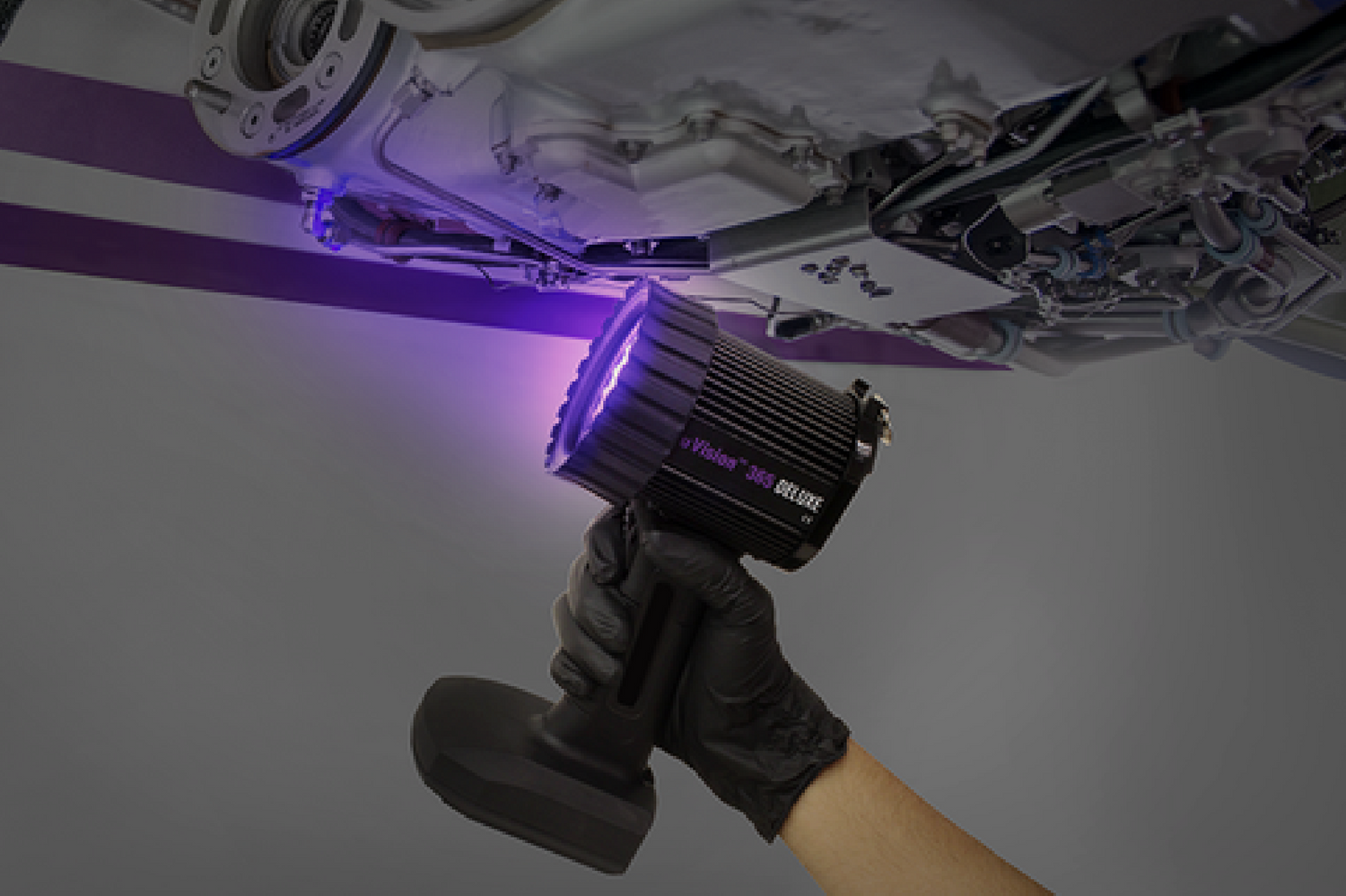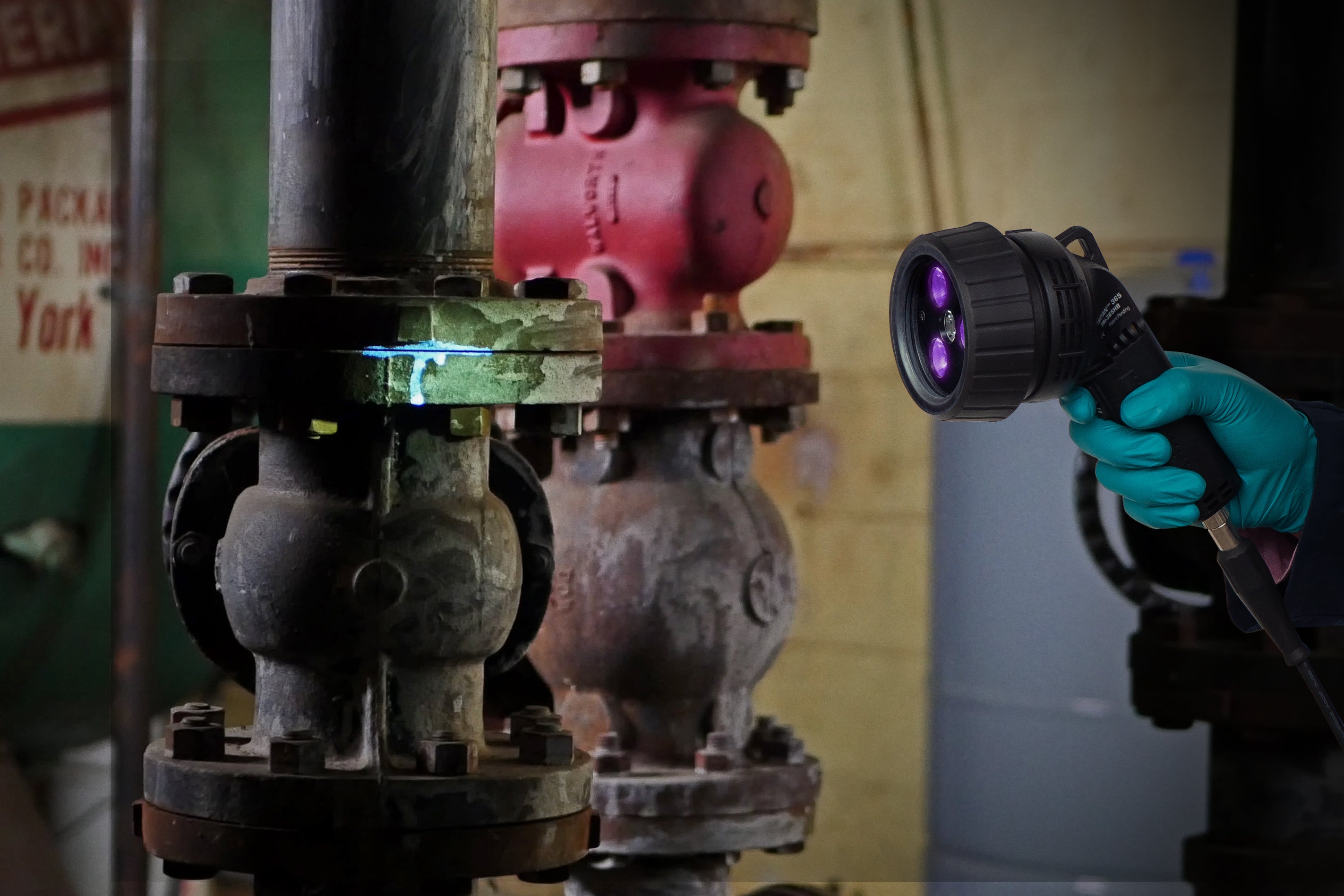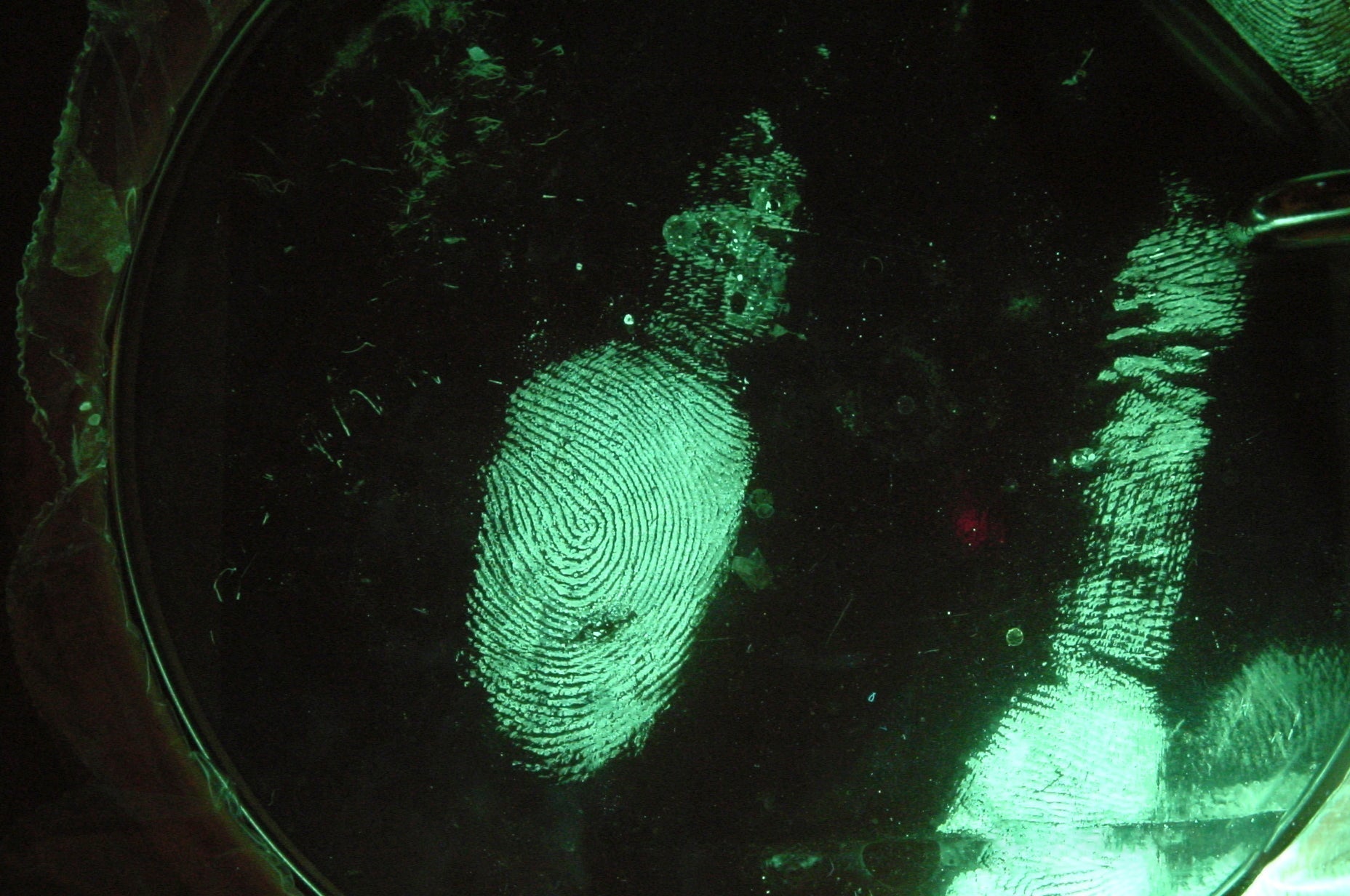In industries where safety and precision are paramount, compliance with established standards is critical. ASTM E3022-18 is a vital standard that governs the performance and safety of UV-A lamps used in Non-Destructive Testing (NDT). This article explores the significance of ASTM E3022-18 compliance, its technical requirements, and how proper implementation impacts inspection reliability and operator safety across aerospace, automotive, and industrial applications.
𝗨𝗻𝗱𝗲𝗿𝘀𝘁𝗮𝗻𝗱𝗶𝗻𝗴 𝗔𝗦𝗧𝗠 𝗘𝟯𝟬𝟮𝟮-𝟭𝟴
ASTM E3022-18, titled "Standard Practice for Measurement of Optical Emission from Fluorescent Penetrant and Magnetic Particle Testing Materials," is a globally recognized standard developed by ASTM International. It specifies the performance and safety requirements for UV-A lamps used in fluorescent penetrant and magnetic particle inspections, key methods in NDT.
Key technical requirements include:
• UV-A Wavelength: Lamps must emit UV-A light centered at 365nm (±5nm), with minimal visible light output.
• UV-A Irradiance: Lamps must deliver a minimum intensity of 1,000 μW/cm² at 15 inches (38 cm) distance.
• Visible Light Limitation: Maximum allowable visible light emission of 2 foot-candles (21.5 lux) in the inspection area.
• Measurement Parameters: Standardized measurement distances and conditions for consistent evaluation.
• Safety Features: Guidelines for protecting users from harmful UV radiation, including automatic shutoffs and exposure warnings.
Why ASTM E3022-18 Compliance Matters
Ensures Reliable Inspections
Compliance ensures that UV-A lamps provide consistent illumination, critical for identifying defects like cracks, voids, and other surface flaws. Non-compliant lamps may produce inconsistent or inadequate lighting, leading to missed flaws and compromised results. Studies by the FAA have shown that properly calibrated UV-A illumination can improve flaw detection rates by up to 27% compared to non-standardized equipment¹.
Guarantees Safety
ASTM E3022-18 sets strict limits on UV and visible light emissions to protect users from overexposure. According to NIOSH guidelines, prolonged exposure to high-intensity UV radiation can cause photokeratitis, skin irritation, and increased risk of skin cancer². Compliance ensures a safer working environment for NDT professionals through proper filtration and limited exposure times.
Supports Regulatory Compliance
Using compliant tools ensures that inspections meet industry and regulatory standards, critical for industries like aerospace (FAA AC 43-3), automotive (NADCAP requirements), and oil and gas (API 653), where safety and quality cannot be compromised. Many certification bodies now specifically require the use of ASTM E3022-18 compliant equipment in their auditing processes.
Improves Confidence in Results
Certified lamps provide confidence that inspections are accurate and repeatable, essential for maintaining product integrity and avoiding costly rework or recalls. A 2021 study published in NDT & E International demonstrated that standardized UV-A sources reduced inspection variability by 41% across different operators³.
Common Applications for ASTM E3022-18 Compliant Tools
Compliant UV tools are essential in industries where safety and accuracy are critical:
1. Aerospace
• Detecting cracks and defects in critical aircraft components such as turbine blades, landing gear, and fuselage structures
• Inspecting composite materials for delamination and impact damage
• Meeting stringent FAA and EASA regulatory requirements for MRO operations
2. Automotive
• Inspecting engine blocks, transmission components, and safety-critical castings
• Verifying the integrity of welds in chassis and structural components
• Quality control for precision machined parts in high-performance vehicles
3. Oil and Gas
• Verifying the integrity of pipelines, pressure vessels, and storage tanks
• Weld inspection of offshore platforms and refineries
• Preventive maintenance inspection of critical infrastructure components
4. Manufacturing
• Ensuring product quality through precise inspections during production
• Mold and die inspection in foundry operations
• Quality control for precision machined parts and assemblies
Types of ASTM E3022-18 Compliant UV-A Equipment
Understanding the different categories of UV-A equipment helps NDT professionals select the right tools for specific inspection scenarios. Each type offers distinct advantages depending on the inspection environment, component size, and mobility requirements.
1. Portable UV-A LED Flashlights
Modern LED-based UV flashlights represent a significant advancement in portable inspection technology. Unlike earlier mercury vapor lamps, LED technology enables:
• Consistent spectral output: High-quality LED sources maintain the required 365nm (±5nm) peak wavelength throughout their operational life
• Instant-on capability: No warm-up period required, unlike traditional bulbs
• Reduced power consumption: Typically, 3-10W versus 50-100W for mercury vapor
• Extended operational life: 50,000+ hours versus 1,000-2,000 hours for traditional bulbs
For example, Spectro-UV's IDX series represents this category, featuring specialized UV filtering to meet the <2 foot-candle visible light requirement. Similar portable units are available from various manufacturers with varying degrees of filtration quality and beam consistency.
When selecting portable units, inspectors should verify:
• UV-A intensity at working distance (minimum 1,000 μW/cm²)
• Visible light leakage (measured in foot-candles or lux)
• Filter degradation characteristics over time
• Battery life and charging cycles
2. High-Intensity Fixed-Position UV-A Systems
For production environments requiring consistent illumination of larger components, high-intensity fixed systems offer several technical advantages:
• Expanded coverage area: Typically, 12-36" diameter inspection area versus 3-6" for handheld units
• Superior intensity stability: Temperature-controlled LED arrays maintain output within ±5% over operating period
• Integrated cooling systems: Active cooling prevents intensity degradation during prolonged operation
• Configurable beam patterns: Adjustable optics allow customization for specific inspection geometries
The MAXIMA™ series exemplifies this category, featuring advanced thermal management systems that maintain consistent UV-A output over 8+ hour production shifts. Similar industrial systems exist with varying degrees of thermal regulation and optical control.
Key technical considerations for fixed systems include:
• Heat dissipation efficiency (affects long-term stability)
• Beam uniformity across inspection area
• Integration with automated inspection systems
• Safety interlocks and automatic shutoff capabilities
3. Measurement and Calibration Equipment
Maintaining ASTM E3022-18 compliance requires regular verification using appropriate measurement tools. Critical specifications for radiometers include:
• Spectral sensitivity: Must accurately measure 365nm UV-A radiation
• Measurement range: Typically, 0-20,000 μW/cm²
• Accuracy: ±5% or better against NIST-traceable standards
• Resolution: 1 μW/cm² or better for precision measurements
• Cosine correction: Compensates for measurement angle variations
Dual-function radiometers like the XRP-3000A AccuMAX provide simultaneous UV-A and visible light measurements, ensuring full compliance verification. When selecting measurement equipment, verification of calibration traceability to national standards is essential.
Understanding Technical Limitations
All UV-A equipment has inherent technical limitations that inspectors should understand:
1. Temperature sensitivity: Most LED sources lose approximately 0.5-1% intensity per °C temperature increase
2. Filter degradation: UV filters typically degrade 3-5% annually with regular use
3. Distance-intensity relationship: UV-A intensity follows the inverse square law, decreasing proportionally to the square of distance
4. Battery performance: Rechargeable batteries typically maintain full performance for 300-500 charge cycles
Proper equipment selection requires understanding these limitations and implementing appropriate maintenance and calibration schedules to ensure continued ASTM E3022-18 compliance.
Recent Updates to ASTM E3022 Standard
The ASTM E3022-18 standard represents an evolution from previous guidelines, with several key improvements:
• Enhanced spectral measurement requirements that more precisely define acceptable wavelength ranges
• More rigorous testing protocols for certification
• Integration with international standards, including alignment with ISO 3059:2012 requirements
• Expanded safety guidelines reflecting current occupational health research
The standard is currently under review by the ASTM E07.03 subcommittee, with a potential update expected in late 2025 that may address emerging LED-based UV technologies⁴.
Why Choose Spectro-UV's Certified Products?
1. Verified Compliance: All Spectro-UV products undergo rigorous testing against ASTM E3022-18 standards at independent laboratories, with certification documentation provided.
2. Superior Performance: Spectro-UV products exceed minimum standards, with many models delivering 30-50% higher UV-A intensity than required, enabling faster and more reliable inspections.
3. Ergonomic Design: Developed with input from NDT professionals, Spectro-UV tools feature balanced weight distribution, adjustable stands, and intuitive controls to reduce operator fatigue during extended inspections.
4. Comprehensive Solutions: From portable flashlights to high-intensity lamps and precision measurement tools, Spectro-UV offers a complete ecosystem of compliant tools for diverse applications.
5. Training and Support: Each product includes comprehensive documentation, training materials, and access to technical support from certified NDT professionals.
Frequently Asked Questions
**Q: How often should UV-A equipment be calibrated to maintain ASTM E3022-18 compliance?**
A: ASTM recommends calibration at a minimum every six months, though many industries require quarterly verification. All measurements should be performed with NIST-traceable instruments.
**Q: Does ASTM E3022-18 apply to both LED and mercury-vapor UV sources?**
A: Yes, the standard is technology-agnostic and applies to all UV-A sources used in NDT applications, regardless of the illumination technology.
**Q: How does ASTM E3022-18 compare to international standards?**
A: ASTM E3022-18 is harmonized with ISO 3059:2012 for most requirements, though ASTM maintains slightly stricter controls on visible light emission. Both standards are recognized globally for NDT applications.
ASTM E3022-18 compliance is a benchmark for quality and safety in UV-A lamps used in NDT. By choosing certified products like those from Spectro-UV, professionals can ensure reliable inspections, enhance safety, and maintain compliance with industry standards. As regulations continue to evolve, partnering with a leader in compliant UV technology ensures your NDT operations remain effective, safe, and future proof.
References:
1. Federal Aviation Administration. (2020). Advisory Circular AC 43-3A: Non-destructive Testing in Aircraft. U.S. Department of Transportation.
2. National Institute for Occupational Safety and Health. (2022). Criteria for a Recommended Standard: Occupational Exposure to Ultraviolet Radiation. Centers for Disease Control and Prevention.
3. Johnson, M., & Thompson, L. (2021). Standardization impact on probability of detection in fluorescent penetrant inspection. NDT & E International, 118, 102-114.
4. ASTM International. (2023). Committee E07 on Nondestructive Testing: Subcommittee E07.03 Work Items. ASTM International.
5. American Petroleum Institute. (2021). API Standard 653: Tank Inspection, Repair, Alteration, and Reconstruction. API Publishing Services.








Leave a comment
Laman ini dilindungi oleh hCaptcha dan tertakluk pada Dasar Privasi dan Terma Perkhidmatan hCaptcha.